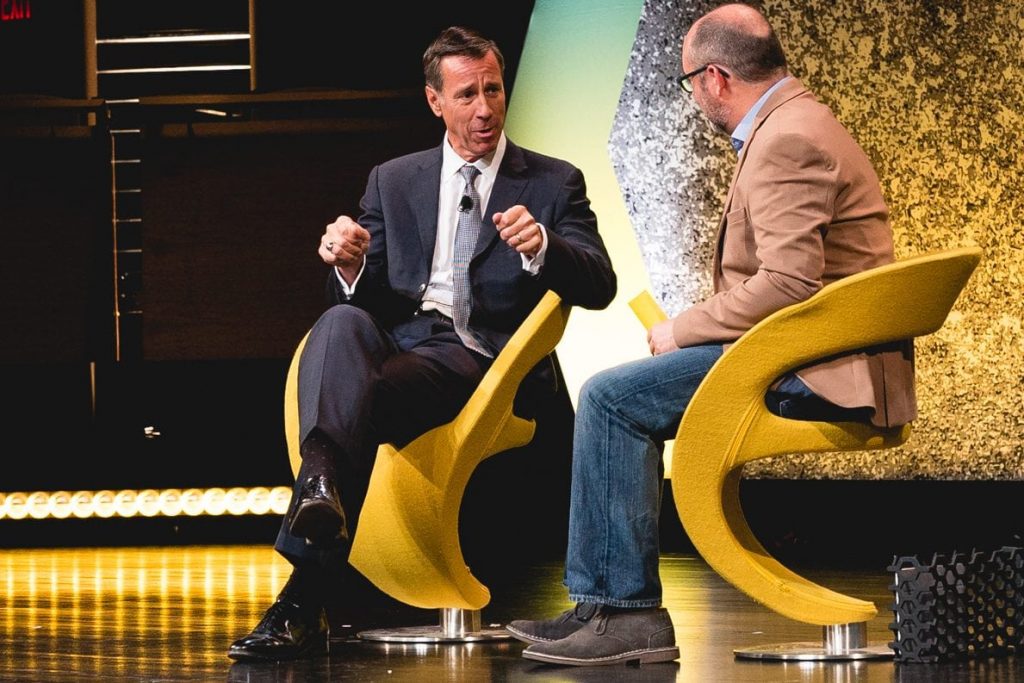Skift Take
The balance between the freedom to travel versus security issues is a dynamic playing out across the globe. A known traveler program that uses biometrics and other data to alleviate security concerns would be great for road warriors and other supertravelers, but might have less utility for once-a-year vacationers. Then again, there are no panaceas.
Editor’s Note: Marriott CEO Arne Sorenson has been an advocate for the transformational promise of travel, and has attempted to be a moderating force against some of the Trump Administration’s harsh anti-immigration and travel policies.
In this exclusive opinion piece for Skift, Sorenson expands on his announcement today in Davos at World Economic Forum 2018 that Marriott will be a partner in a pilot of the Known Traveler Digital Identity initiative to bridge the gap between flourishing international travel demand and the need for security.
I’ve been in the hospitality business for two decades now and have never seen anything like the divergent trends we are witnessing today.
On the one hand, we’re seeing the growing pressure for increased border security, fueled in part by legitimate safety concerns about international terrorism, but also by the unfortunate rise in nationalist impulses around the world.
On the other hand, the demand for international travel has never been greater. The United Nations World Tourism Organization figures show that the number of people visiting other countries will skyrocket by 50 percent in the next 12 years, reaching 1.8 billion foreign travelers by 2030. The rising middle classes in Africa, the Middle East, and Asia, as well as the experience-minded millennials and retiring boomers, are fueling this travel surge.
But the ability to balance between security needs and travel demand is going to create huge problems going forward if we pile more people on the current system. Cumbersome visa processes, long lines, and a reliance on paper documents will make travel increasingly unpleasant.
So how do we bridge this growing gap? How do we facilitate secure international travel and embrace openness in an age of increasing mistrust, suspicion, and fear?
Marriott Is a Partner in Known Traveler Digital Identity Testing
I’m a firm believer in the potential of technology to alleviate even the most challenging problems. And in this case, it offers us the ability to make international travel smoother and more inviting for people – no matter their country of origin – while still providing the levels of safety and security that we all demand. In our view, the ability to travel should be based on who you are, not where you were born or the color of your passport.
That’s why Marriott is partnering with the World Economic Forum, Accenture, and others in a public-private collaboration to innovate the future of travel. I’m excited because this year we’ve finally been able to take it from concept to action and are ready to pilot a project called Known Traveler Digital Identity (KTDI).
The goal of KTDI is simple: Using biometrics and other data, create a verifiable, unique, and secure digital identity for “known” travelers and provide them with seamless, virtually hassle-free travel experiences around the world.
KTDI pairs biometric information with traditionally paper-based tokens – allowing for paperless access at various points in the travel experience, including security, boarding, and immigration. To enroll, travelers would need to have their information verified and their biometrics recorded at an enrollment center prior to their initial travel.
KTDI will let travelers build their safety profile by adding travel records to their database. In other words, travelers will become partners in travel security. Most importantly, the system will put travelers in control of their own data, letting them decide what they want to share and with whom for a better travel experience. They can “push” their KTDI data to various parties along their journey and those entities, public or private, in turn make that traveler’s process smoother.
Canada and the netherlands Explore Participation
To encourage travelers to adopt KTDI, however, we need to show them the value of enrollment. From airport to hotel to guest room, we will demonstrate that creating and using KTDI will improve the entire travel experience. Our hope is that Marriott International’s pilot of KTDI at one of our properties will serve as a proof-point for other companies in our industry and beyond to join this effort in enhancing the travel experience.
Of course, we can only do so much. Governments have a huge role to play here to upgrade and modernize their travel facilitation systems. Two forward-looking countries have stepped up to the challenge – Canada and the Netherlands – and have both agreed to explore the roll out of KTDI at an airport, expediting the travel journey between the two countries at both the security checkpoint and immigration.
Other countries have taken steps to increase information-sharing with trusted allies and partners. KTDI will facilitate this process, letting governments focus their efforts on the travelers they know less about so they can better allocate resources to those individuals, while letting each country maintain their security requirements and make their own risk assessments.
Marriott’s goal continues to be to reimagine the travel experience and reduce barriers for our guests. KTDI has the potential to change the way we travel, embracing new technologies, and shaping the way we think about security and personalization.
The potential is truly extraordinary for our countries, our economies, and everyone with wanderlust. We’re excited to be part of bringing the future of travel to life and proud to have such excellent partners on our journey.
The Daily Newsletter
Our daily coverage of the global travel industry. Written by editors and analysts from across Skift’s brands.
Have a confidential tip for Skift? Get in touch
Tags: biometrics, marriott, security
Photo credit: Marriott International CEO Arne Sorenson (left) speaking at Skift Global Forum in New York City in September 2017. Skift
